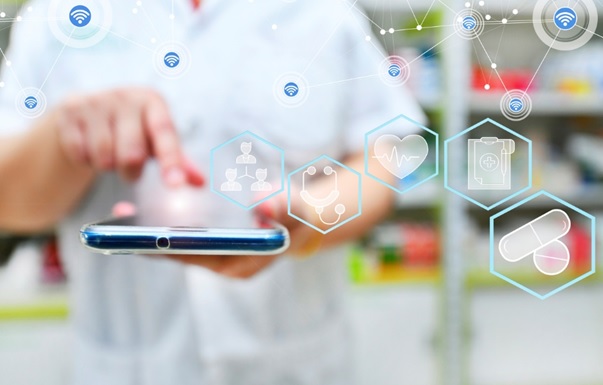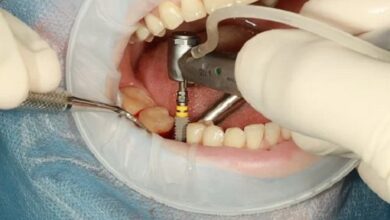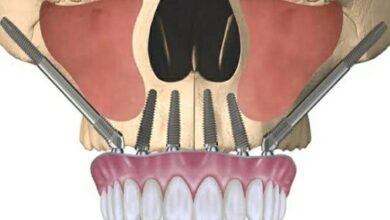What technologies are used in modern pharmacies?

Health is a sector that is always evolving and always changing. In the modern age, this is evident in how quickly technology has become a central part of healthcare systems around the world. In the US, for example, electronic health records and telemedicine have emerged in recent years to transform how patients are cared for. The growing use of technology in healthcare is, of course, a positive thing and something that we should look forward to seeing more of as time passes.
The latest technologies are also having an impact on certain niches and roles across the entire health system. Pharmacists are a case in point and use a range of technology in their daily roles now. Due to this, modern pharmacies are also stocked with the latest kit that pharmacists must use in their job.
But how can those looking to move into a pharmacy career learn how to use this technology and what are some of the best examples of it in action?
Education is key for modern pharmacists who use innovative technology
Those planning to move into a career as a pharmacist will have to become adept at not only using the most advanced technology within the industry currently but also be open to using any new innovations that may occur in the future. This ensures one can perform their job to the best of their abilities and remain at the top of their profession.
One of the best ways to learn more about technology in this sector is via formal education. Following a robust academic pharmacy course also means one has the qualifications needed to work in this profession legally.
The online PharmD from the University of Findlay is a popular course with this in mind and is accredited by the Council for Pharmacy Education. In addition, it comes with a graduate dual degree option and a module in advanced pharmacy practice experience. This is useful because it allows people to see first-hand the kind of technology they will use in the role.
Technology used in pharmacy
There are a variety of ways technology is being implemented in pharmacy. These include:
Automated robotic dispensing units
An automated dispensing unit is usually seen in clinical pharmacy settings (such as hospitals or clinics) and is a computerized drug storage device. It enables medication to be not only stored but also dispensed near the point of care.
As the name suggests, this piece of kit also automates drug distribution and tracks the dispensation of medication. This is useful in the pharmacy profession because it cuts back on human error and allows human staff to focus on direct patient care — rather than spending all their time filling prescriptions.
Programs that monitor prescription of medication
Known as PDMPs (which stands for prescription drug monitoring programs), this high-tech database collects state-specific data on controlled substance prescriptions, drugs that are in development or those that are operational for pharmacists to view.
By checking the PDMP database before filling a controlled substance prescription, for example, people in this role can ensure patient safety when dispensing drugs. Although optional in most US states, using PDMP software is encouraged and a handy skill for pharmacists to have.
Medication therapy management
Medication therapy management (MTM) is a digital platform that enables pharmacists to manage a patient’s medication more easily. It achieves this by giving an easy-to-use online platform where pharmacists can place reviews on a patient’s medication program. This information is then not only available for the pharmacist to access when needed but the patient as well.
The review itself normally involves the pharmacist looking at all prescribed and over-the-counter drugs someone may be taking — plus any safe natural health remedies in family life they may use. This is to help address any potential issues around how all this medication may interact.
It can also look at drugs that are being misused, ones that are being prescribed but are not needed and medication that is required for a condition. All this information can then be placed on the online MTM platform for patients to review and discuss with their pharmacist.
IoMT crucial in modern pharmacy settings
The Internet of Things is nothing new to most people and is something that one will likely be familiar with. It is something that has started to make its way in modern pharmacies and a technology that contemporary pharmacists must be au fait with.
It is fair to say that modern pharmacy settings are adopting it at a fast pace and this has led to the Internet of Medical Things (IoMT) being a common term in the industry. As the name suggests, this is like the normal IoT but focused specifically on medical devices connecting/interacting with others online.
This can see digital systems that manage medication supplies in a pharmacy talk to automated filling machines in order to deliver a more efficient service. However, human management of IoMT devices is still crucial, and this means pharmacists need to know how to operate them.
What benefits do modern technologies bring to the pharmacy field?
The cutting-edge examples described above that modern pharmacies use around the country show how widespread technology is within the sector. But what benefits does this increased adoption of technology deliver?
As with anything related to healthcare, the major advantage is better levels of patient care and more positive patient outcomes. Whether it is medication therapy management platforms leading to better medication plans or automated dispensing units allowing for more time to engage with patients, there is no doubting the positive impact technology can have in this area.
Ensuring that modern pharmacies stride into the digital age also means they are able to move with society and the changing nature of it. With technology being so common in daily life, it would look odd if pharmacy as a profession were left behind.
Technology is critical for modern pharmacists
When you also add in the most basic technology, which has been around in pharmacies for a while now, it is clear just how much the modern pharmacy sector relies on these advancements.
Although emailing colleagues or looking up key medication data online may seem commonplace, they are both excellent examples of the influence technology has had on the profession. Of course, the examples we have looked at above in more detail clearly show how this is continuing to develop as time moves on and is pushing pharmacies themselves into exciting new territories.






